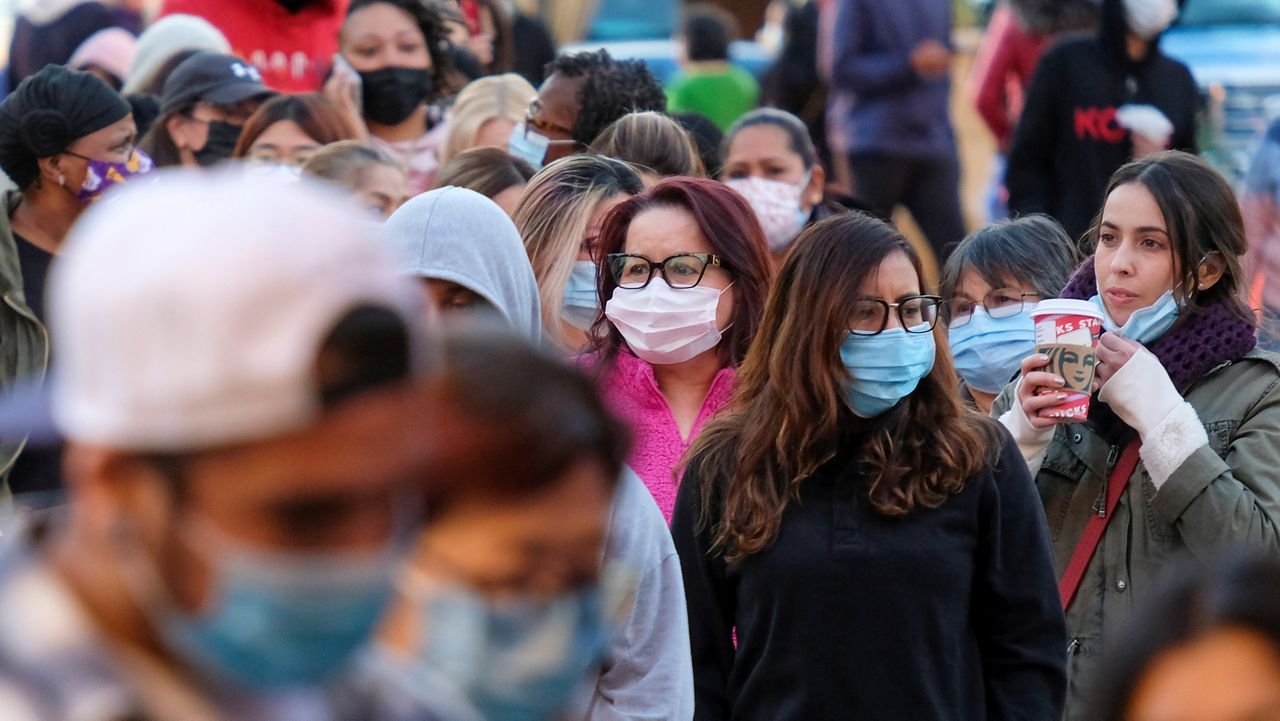The Biden administration significantly loosened mask-wearing guidelines to protect against COVID-19 transmission in local communities on Friday.
The news, which was first reported by The Associated Press, means most Americans will no longer be advised to wear masks in indoor public settings.
What You Need To Know
- The Biden administration loosened mask-wearing guidelines to protect against COVID-19 transmission on Friday
- That will mean most Americans will no longer be advised to wear masks in indoor public settings
- The new metrics still consider caseloads, but also take into account hospitalizations and local hospital capacity
- Under the new guidelines, the vast majority of Americans will no longer live in areas where indoor masking in public is recommended based on current data
The Centers for Disease Control and Prevention on Friday announced a change to the metrics it uses to determine whether to recommend face coverings, shifting from looking at COVID-19 case counts to a more holistic view of risk from the coronavirus to a community. Under previous guidelines, masks were recommended for people residing in communities of substantial or high transmission.
"The metrics that we specifically are relying on here for these COVID-19 community levels don't reflect data that were stood up in summer of 2020 specifically for pandemic response data collection through the unified hospital data system," an official said Friday.
"So this is really a phenomenal data source that allows us to, on a daily basis, assess how many new hospitalizations that have been in hospital for people with confirmed COVID-19 and the percent hospital capacity and hospital beds in use by people with COVID-19."
The new metrics will place communities into one of three transmission zones, rather than the previous four: low, medium and high, color-coded as green, yellow and orange. Individuals who are at high risk of contracting COVID-19, such as immunocompromized individuals, are still recommended to wear a mask regardless of where they reside.
The new metrics will still consider caseloads, but also take into account hospitalizations and local hospital capacity, which have been markedly improved during the emergence of the omicron variant. That strain is highly transmissible, but indications are that it is less severe than earlier strains, particularly for people who are fully vaccinated and boosted. Under the new guidelines, the vast majority of Americans will no longer live in areas where indoor masking in public is recommended, based on current data.
"Cases will still be a part of [the new metrics]," CDC director Dr. Rochelle Walensky told reporters on Friday. "But we need to recognize that we're covering cases differently now than we did over a year ago when we established the prior metrics."
Now, the number to determine high caseload will increase to 200 new COVID cases per 100,000 individuals in one week, rather than the previous metric of 100 per 100,000.
According to the most recent data, 23% of counties are at low transmission, around 39% of counties are at a medium rate of transmission and 37% of counties are at high levels of community transmission. The recomendations are matched to the level of transmission in a given community, officials said; individuals in communities with high transmission should wear a mask in all indoor locations.
The guidance does not impact federal guidance for travel corridors, Walensky said, meaning the current mask mandate on public transportation — which is set to expire by mid-March — is not impacted by Friday's announcement. Officials will consider whether to extend the mask mandate in the coming days.
The announcement will also impact schools, officials said: "Since July 2021, CDC recommended universal masking in schools no matter what level of impact COVID-19 was having on the community. With this update, CDC will now only recommend universal school masking in communities at the high level."
Those protections can be can be "dialed up when our communities are experiencing more severe disease and goes down when things are more stable," officials added.
The new policy comes as the Biden administration moves to shift its focus to preventing serious illness and death from COVID-19, rather than all instances of infection, as part of a strategy adjustment for a new “phase" in the response as the virus becomes endemic.
The two people familiar with the change spoke on the condition of anonymity to preview the CDC's action before the announcement.
The change comes as nearly all U.S. states that had put in place indoor mask-wearing mandates for the winter omicron surge are letting them lapse as cases have precipitously dropped nationwide. Some have eliminated the mandates entirely, while others have kept mask-wearing requirements in place for schools and medical facilities.
The CDC’s director, Dr. Rochelle Walensky, has said a change has been in the works.
“We must consider hospital capacity as an additional important barometer. Our hospitals need to be able to take care of people with heart attacks and strokes. Our emergency departments can’t be so overwhelmed that patients with emergent issues have to wait in line,” she said during a White House briefing last week.
However, she declined to give a specific day when the CDC would announce a change. CDC officials on Thursday refused to confirm a release date.
“At @CDCgov, we have been analyzing our #COVID19 data and shifting our focus to preventing the most severe outcomes and minimizing healthcare strain,” Walensky tweeted Thursday night, offering no details on Friday’s announcement.
“Moving forward, our approach will advise enhanced prevention efforts in communities with a high volume of severe illness and will also focus on protecting our healthcare systems from being overwhelmed,” she added.
The latest U.S. seven-day average for new COVID-19 infections is 75,208, down significantly from more than 800,000 in mid-January. It’s the fewest reported cases since Nov. 11.



